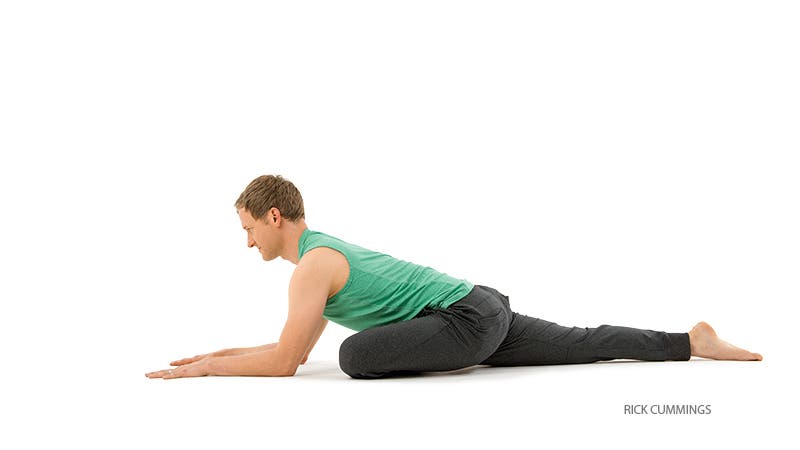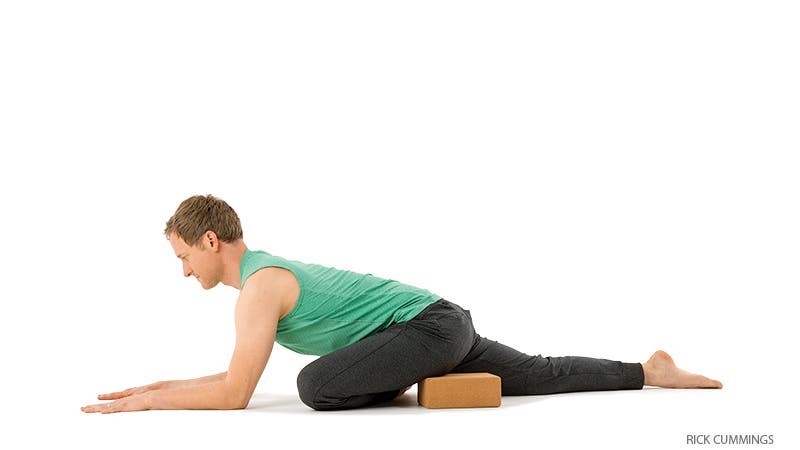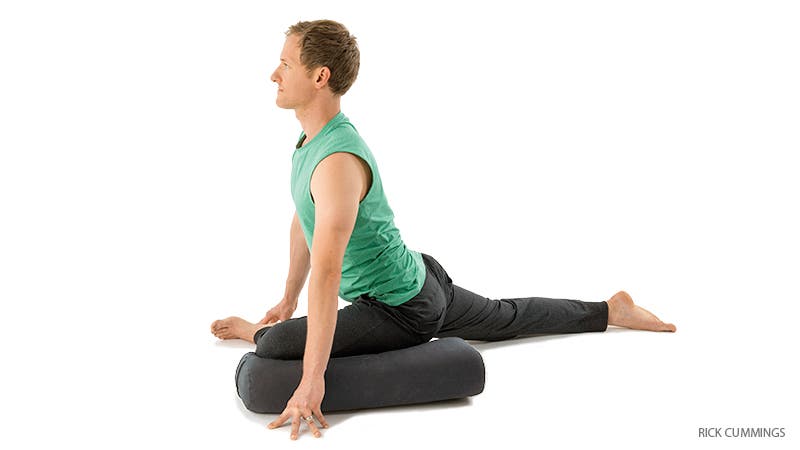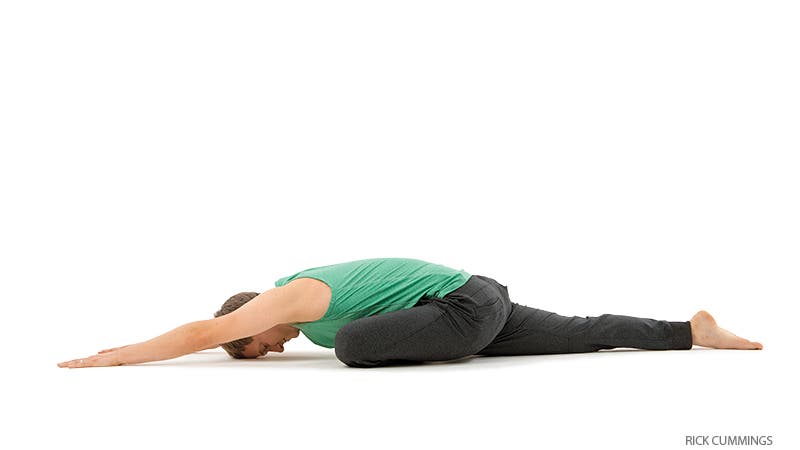Modify Sleeping Pigeon Pose to Balance Body + Mind

Modify Sleeping Pigeon Pose if needed to find safe alignment for your body.
PREVIOUS STEP IN YOGAPEDIAMaster Sleeping Pigeon Pose in 4 Steps
NEXT STEP IN YOGAPEDIA 3 Prep Poses for Flying Pigeon
SEE ALL ENTRIES IN YOGAPEDIA
If the stretch in your hip is too intense…

Try bringing your elbows to the floor. When your arms are active and your elbows are raised off the floor the majority of your weight is sinking into your pelvis. For some students, this is too intense. Bringing your elbows to the floor and lifting gently through your chest distributes some of your weight into your upper body and decreases the intensity of the posture. You will receive the exact same benefits in this variation, and you may be able to hold the pose even longer!
See alsoEveryday Yoga for Athletes: 6 Post-Workout Hip Openers
If your front knee hurts, or to decrease the stretch in your outer hip…

Try placing a bolster under your front hip, thigh, and knee. Then, bring your front shin forward until it’s parallel to the front of your mat, dorsiflex your ankle (i.e., bring your toes toward your knee), and slide your rear leg toward the back of your mat.
See alsoLearn Pigeon Pose on Your Back (Eka Pada Rajakapotasana)
If your front sitting bone does not lower to the floor…

Try placing a block, blanket, or bolster under the sitting bone of that leg. Supporting your sitting bone will allow you to release the weight of your body and will increase your comfort in this posture; you’ll thus be able to breathe more deeply and easily, producing a calming effect on your nervous system. To do this, simply come into Sleeping Pigeon and slide the prop between your sitting bone and the floor. Prop yourself up on your forearms; use as much height as you need in order to keep your pelvis level and feel supported in the posture.
See alsoMission Possible: 5 Steps to Kasyapasana
Balanced Body and Mind

In this practice, focus your attention on sama, the Sanskrit word for “equal” or “same.” Sama can be thought of as a physical attribute, such as when the demands of a posture are evenly distributed throughout the entire body. It can also be thought of as a mental quality, like when you stay calm and focused in a challenging situation, on or off your mat. As you practice Sleeping Pigeon and its arm balance version, Eka Pada Galavasana, you’ll easily experience the physical expression of sama. But even more, you’ll be challenged to maintain mental equilibrium: You’ll likely have to resist overreacting if the posture is difficult for you. So, remember, you’re practicing on three levels: You’re working to develop the posture itself; you’re working to use your whole body evenly; and you’re working to keep your mind present and composed.
See alsoChange Your Stress Response
About Our Pro

San Francisco–based instructor and model Jason Crandell has 20 years of teaching experience. His classes integrate elements of power yoga, anatomical precision, and mindfulness. Crandell has taught on many teacher-training faculties and leads trainings globally. He is a contributing editor at Yoga Journal, where he has authored more than 25 articles, a podcast series, and four full-length DVDs. Find more of his teachings at jasonyoga.com.